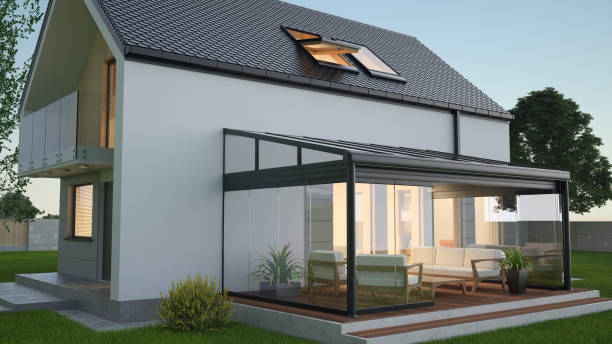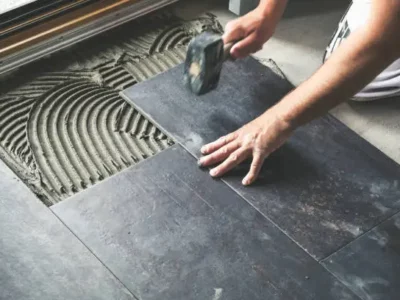If you are planning to build, extend, or renovate your home, one of the most important decisions you will have to make is what type of steel reinforcement to use for any concrete structures you may be building. Steel reinforcement is essential for providing strength and durability to concrete, which is otherwise weak in tension. There are two main types of steel reinforcement to consider in this situation: welded steel mesh and loose rebar. One being a prefabricated form of reinforcement, the other requiring tying on-site.
In this article, we will explain the difference between these two options, and the advantages and disadvantages of using each. We will also discuss the various types of mesh available, and the most common ones used for residential projects.
Welded steel mesh vs. loose rebar
Some basic info here to start us off: Welded steel mesh is a prefabricated product that consists of parallel and perpendicular wires welded together at regular intervals. The mesh comes in rolls or sheets of various sizes and shapes, and can be cut and bent to fit the dimensions of your project. Loose rebar, on the other hand, is individual steel bars that are placed and tied together on site according to the design specifications.
The main benefit of using steel mesh is that it saves time and labor. You don’t have to measure, cut, bend, and tie the bars individually, which can be tedious and time-consuming. You simply unroll or lay the mesh over the formwork, and secure it with spacers or supports. The mesh also provides uniform distribution of reinforcement throughout the concrete, which reduces the risk of cracking and improves the structural performance.
The main drawback of using rebar mesh is that it has limited flexibility. You can’t adjust the spacing or orientation of the wires to suit your specific needs. You also have to make sure that the mesh is compatible with the shape and size of your project, as it may not fit well in corners or curves. Additionally, welded steel mesh may not be suitable for areas that are exposed to high temperatures or corrosive environments, as the welding points may weaken or rust over time.
Loose ‘cut and bent’ rebar, on the other hand, offers more versatility and customization. You can choose the diameter, length, shape, and spacing of the bars according to your requirements. You can also bend and tie the bars in different angles and directions to create complex patterns and designs. Loose rebar is also more resistant to heat and corrosion than welded steel mesh, as there are no welding points that may deteriorate.
The main disadvantage of using loose rebar is that it requires more skill and effort. You have to follow the design drawings carefully and accurately, and use special tools and equipment to cut, bend, and tie the bars. You also have to ensure that the bars are properly aligned and spaced, and that they have adequate cover from the concrete to prevent rusting and corrosion.
Types of mesh
There are different types of steel mesh available in the market, depending on the size, shape, and configuration of the wires. Some of the most common types are:
Square mesh
This is the simplest type of mesh, where the wires are arranged in a square grid pattern with equal spacing in both directions. This type of mesh is suitable for general purpose applications such as slabs, walls, floors, etc. The most common types of square mesh for this kind of application is A103, A252, and A393.
Rectangular mesh
This type of mesh has wires arranged in a rectangular grid pattern with different spacing in each direction. This type of ‘structural’ mesh is suitable for applications where more reinforcement is needed in one direction than the other, such as beams, columns, foundations, etc.
Trench mesh
Trench mesh has long rectangular sheets with narrow widths and large spacing between the wires. This type of mesh is suitable for applications where reinforcement is needed along a linear axis such as trenches, footings, etc.
Ribbed mesh
Ribbed mesh has wires with raised ribs along their length to provide better bonding with the concrete. This type of mesh is suitable for applications where high strength and durability are required such as bridges, highways, etc.
Choosing the right steel reinforcement for your home is a crucial decision that affects the quality and longevity of your concrete structures. You should consider the pros and cons of using welded steel mesh or loose rebar, and select the type that best suits your needs and budget. You should also be aware of the different types of mesh available, and the accessories that you might need to ensure a successful installation. Of course, the chances are that this decision will come down to your contractor’s preference, but at least you now have the knowledge you need to keep up with them when discussing it!




















